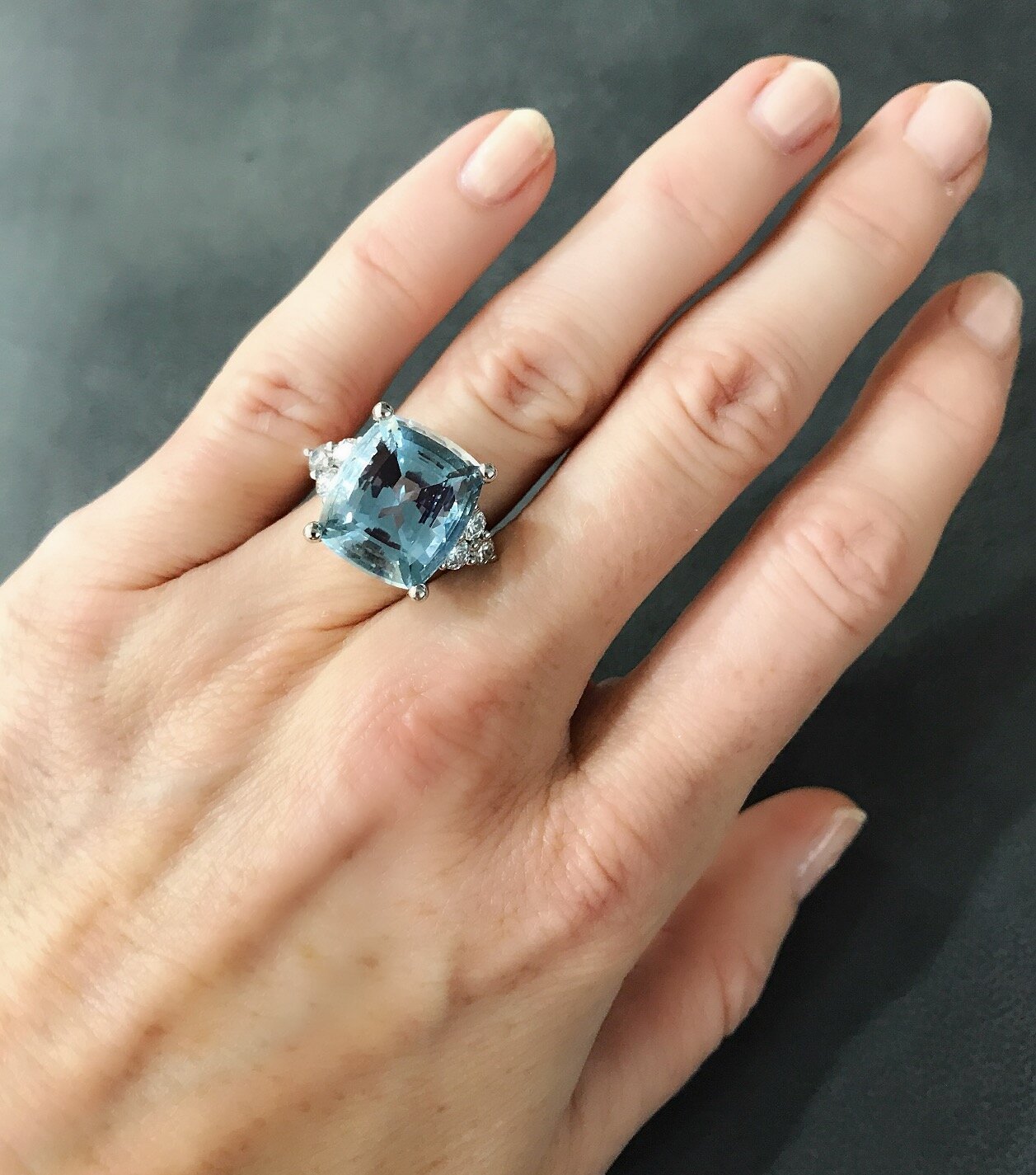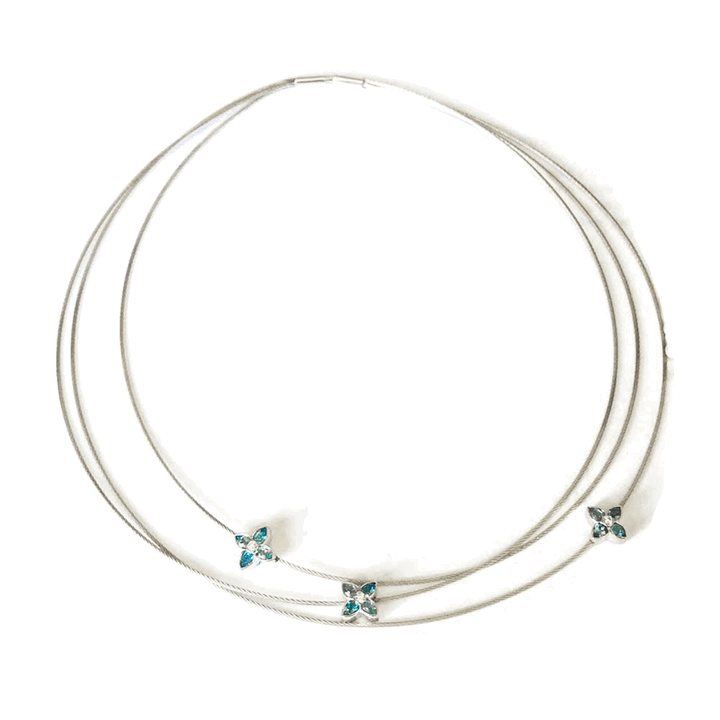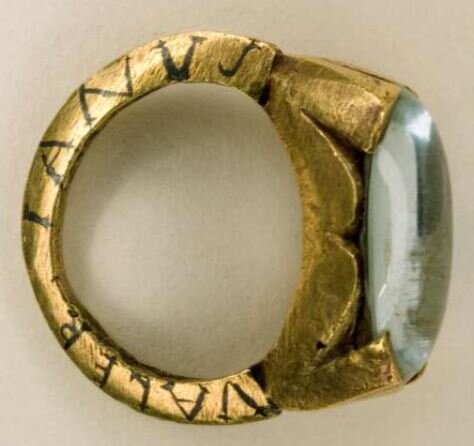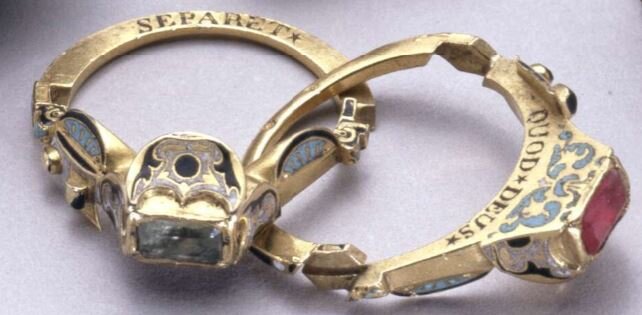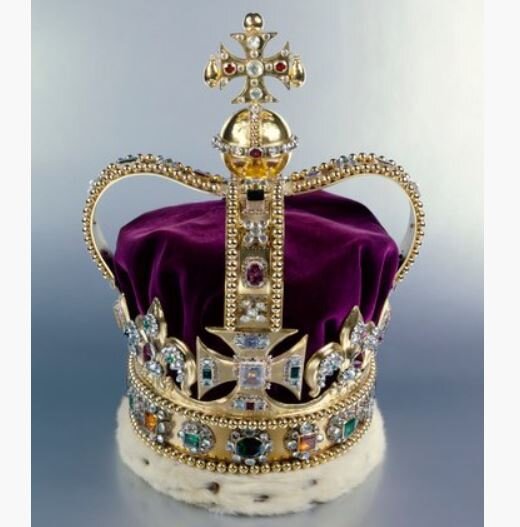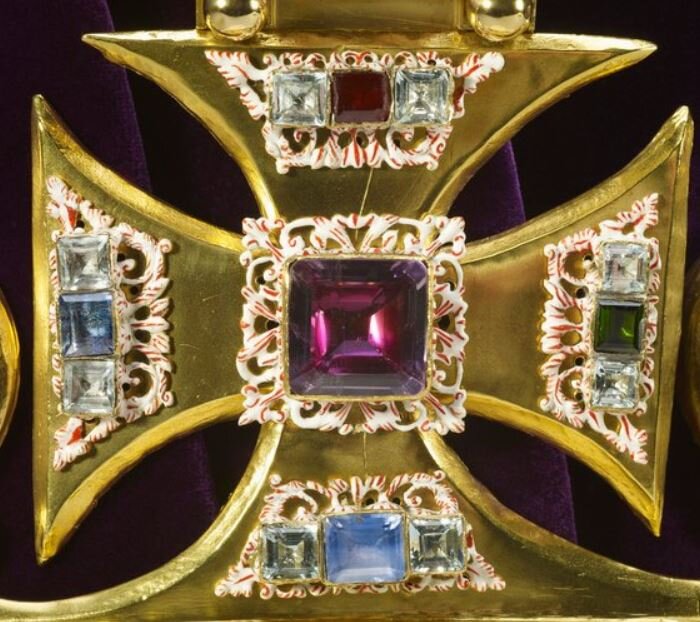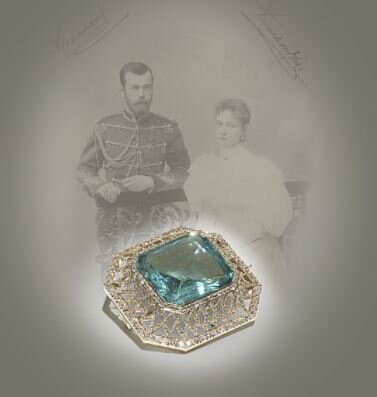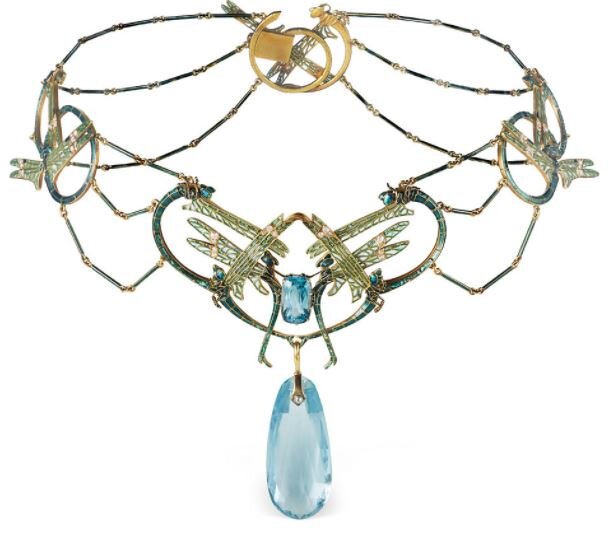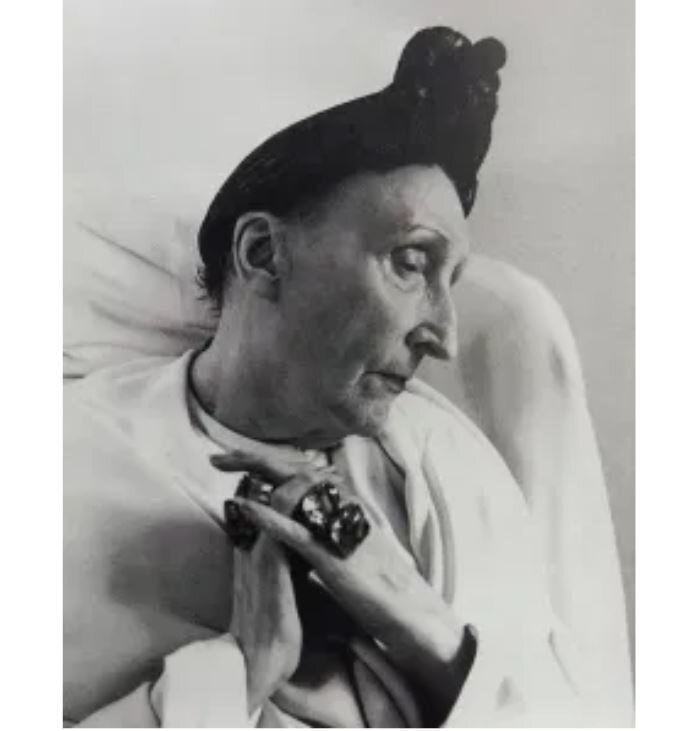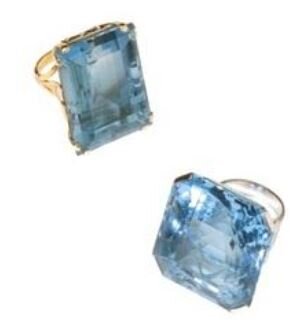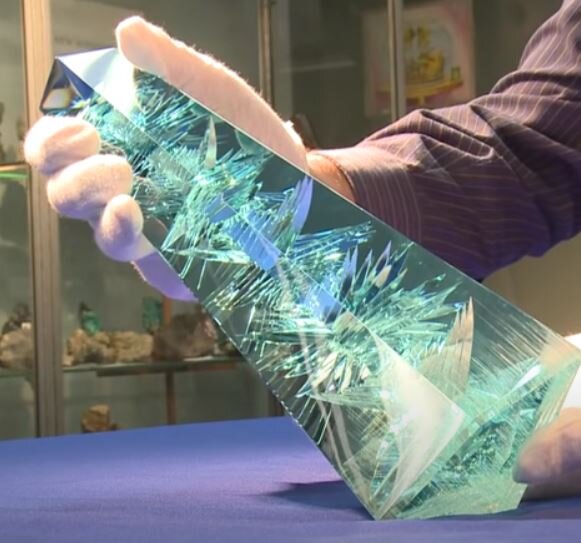Aquamarine - March’s Birthstone

Celebrate March's birthstone - serene aquamarine.
After diamonds, my clients seem to love aquamarine more than any other gemstone, especially for statement jewels and cocktail rings. Maybe it’s because of its elegant flattering colour, maybe it is because they often come in such large lucid clear crystals, or maybe it’s the relatively high show for dough ratio. Whatever the reason, or combination of reasons, aquamarine has been very popular and stylish for the last 150 years. The name is Latin for 'Water of the Sea' and it's supposed to protect sea farers, so always wear one on your yacht.
Classics such as aquamarine cocktail rings are intergenerational. Many of my clients love to revamp their family jewels like the example set by Prince Harry who gave a beautiful aquamarine ring to his new bride Meghan Markle as a wedding gift. You could hardly miss spotting the enormous gem on their journey to their evening wedding party on 19 May 2018. The ring was an heirloom from Prince Harry’s mother Princess Diana, who bought it for herself in October 1996 just after finalising her difficult divorce from his father two months previously. Tellingly, she went to Asprey, the duelling sister company of Crown Jewellers Garrard at that time, to buy this statement ring for herself. There’s nothing quite like buying yourself a lovely big jewel to express self-worth or to celebrate the end of a gruelling time.
I’m often asked for a perennially popular anniversary gift - the classic aqua single stone ring, the epitome of chic simple elegance - like the ring shown here.
We’ve had a few aquamarine owning clients wanting to find better ways of enjoying their pieces. One of our clients had a Boodles necklace given to her by her husband that never came out of its box, which was such a shame. She loves big rings, so we transformed it into a show stopper she loves and wears all the time now and not just for best. The ‘before and after’ gif shows how effective this transformation was.
Aquamarine History & Famous Jewels
Aquamarine wasn’t much appreciated by the historic Indian cultures, who were the super jewellery consumers of their day. The Vedic astrology so endemic in Indian culture advised against blue stones unless very expert advice had been sought to determine the exact position of Saturn in the individual’s birth chart, otherwise it would prove harmful – even cataclysmic – to wear one.
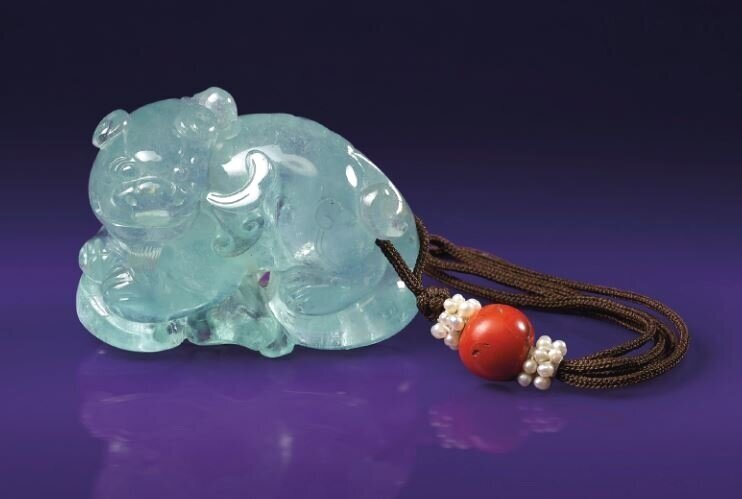
Similarly, in Chinese jewellery, aquamarine makes scant appearance, shouldered out by turquoise, the gem whose colour traditionally symbolised the Moon. However, I have found this image of a sleeping mythical beast, beautifully carved in aquamarine, from the Qing dynasty to share with you from a Sotheby’s back catalogue. Perhaps it represents a creature from the Moon.
An aquamarine ring is held in the British Museum from the Roman period. It is a gold wedding-ring set with an oval cabochon aquamarine. The names of the couple, Valerianus and Paterna, are inlaid in niello around the edges of the ring. In Antiquity spectacles were made from colourless slices of polished beryl, from where the German word for spectacle ‘Brille’ comes.
In European Medieval courtly life, romance and virtue were held in high esteem, and colours were highly symbolic: red for passion, often denoting Christ’s blood sacrifice, Mars and war; and blue for romantic love, Heaven, Mary Mother of Christ. Blue was thus a deeply romantic colour and we hear echoes of this in the wedding verse, “something old, something blue…”
Also in the British Museum is this wonderful German C16 gimmel ring (conjoined wedding ring) of gold and enamel, each ring set with gems of both colours: red for passionate love and blue for romantic love. It is engraved in Latin with a line from the marriage ceremony: QUOD DEUS CONJUNXIT HOMO NON SEPARET
In Britain, after the original coronation crown was destroyed by Cromwell, a new crown was made for the Coronation of Charles II in 1661. Called the St Edward's Crown, this 5lb golden masterpiece is set with a plethora of gems of all colours and types. Mixed in with topaz and sapphires, are aquamarines set into the cross pattées.
From 1894 comes one of the most tragic and enigmatic jewels I have ever held. I was lucky enough to be shown it by past Wartski director and TV jewellery expert, Geoffrey Munn, who told me its story. The brooch was a much-treasured personal jewel belonging to the last tsarina of Russia, Empress Alexandrina Feodorovna, and was an engagement gift from Tsarevich Nicholas, later Emperor of Russia. He had been smitten by love for Alix for over a decade since seeing her at her sister’s marriage to his uncle. Here in this brooch is the blue of true love caught in a delicate crystal web, beautifully expressed by the workshops of Faberge. The Russian imperial family’s fall from power and brutal assassination in 1918 by Communist Bolsheviks overshadows its history. This jewel, as a personal touchstone, went with Alix and her family into a year of house arrest, finally given over to her captors on the morning of their horrifying execution on 17 July.
In the revolutionary design epoch of Art Nouveau, perhaps no other gem captures the ethereal crystalline colours of Lalique, the master of plique a jour enamel, than aquamarine, shown so well in this breath taking necklace of 1902-4 from Wartski’s on-line back catalogue.
From early C20th Britain, the truly eccentric aristocrat, poet and writer Edith Sitwell once said “I feel undressed without my rings”. Six feet tall, with arresting features, Sitwell was friends with Gertrude Stein, Dylan Thomas and Marilyn Monroe, and her idiosyncratic scarecrow style was photographed by Cecil Beaton. Her beautiful jewellery achieved a fame of its own due to the articles she wrote in Harpers Bazaar and the way she wore multiple rings on each finger. If you’ve got it flaunt it, after all. Her famous aquamarine rings are now on loan to the V&A.
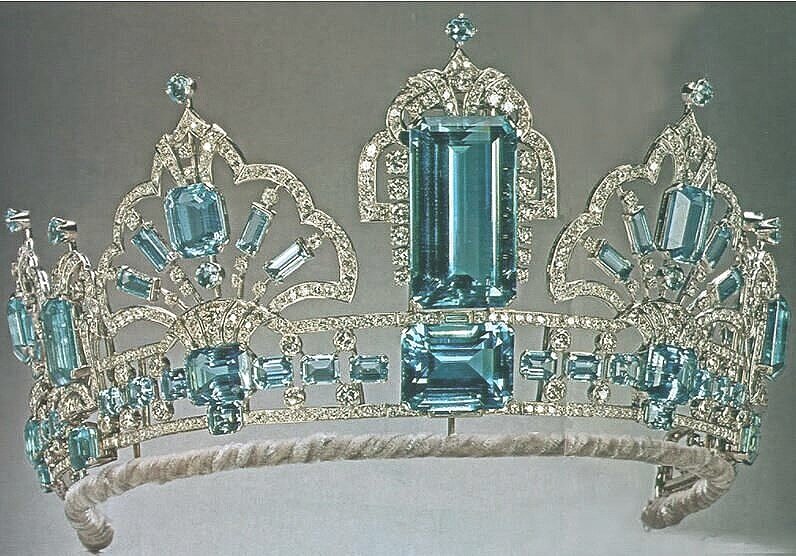
From HM The Queen’s collection is a sensational aquamarine suite, which was given by the President and People of Brazil as a Coronation gift in 1953, followed later by a matching bracelet. To top it off, The Queen commissioned a tiara to complete the suite.
Gemmology
Aquamarine is sea green brother of emerald, and belongs in the beryl gem group along with blush pink morganite and unusual yellow helidor and even rarer red beryl.
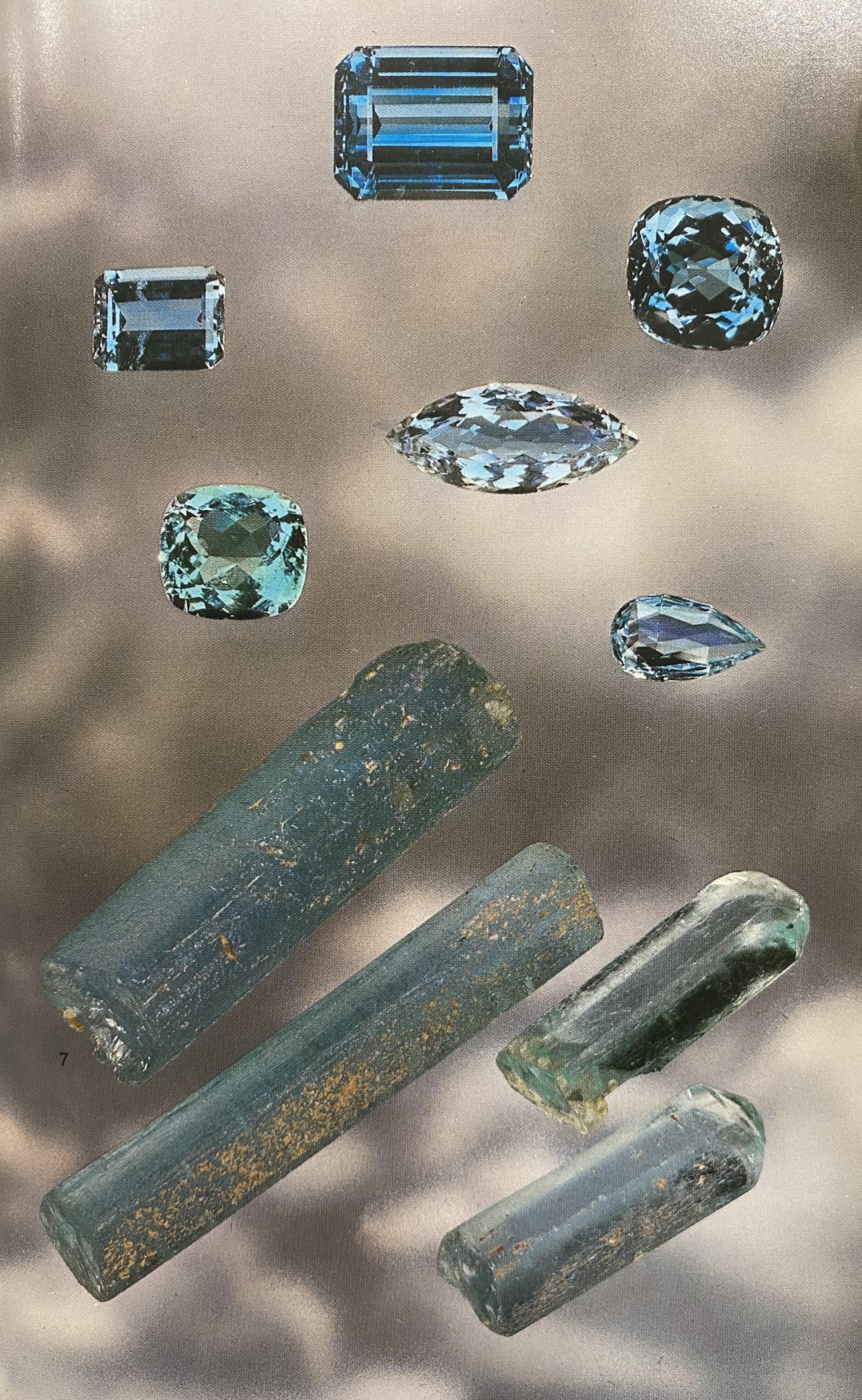
With the same high hardness as emerald at 7.5 - 8 on the Mohs scale, just under sapphire and ruby at 9, aquamarine makes a durable, practical gemstone. Like its beryl family members, two of Earth’s most abundant minerals, aluminium and silicate (silicon + oxygen) form its chemical composition plus beryllium, a rare earth element which derives from granite parent rock, and it’s this element which gives the beryl gem family its name.
Beryl crystals are found in host rock called pegmatite – a course grained rock composed of many crystals which formed when super-heated mineral rich hydrothermal fluids seeped into the rocks surrounding hot granite masses deep in the heart of mountains. It is simply a fluke of nature which determines the type of gem that subsequently forms: the tiniest presence of metal ions in the solution, derived from the rock through which the fluids are seeping – chromium for emerald, iron for aquamarine and yellow heliodor, manganese for morganite. The trapped fluids undergo such slow stable cooling over millions of years that they can grow into large crystals. Unlike emerald, which has an intricate interior world of inclusions called ‘jardin’, aquamarine is naturally found in much cleaner crystals with fewer flaws.
The shape of many cut gemstones is determined by its long prismatic hexagonal crystal habit, yielding step-cut octagonal gems or long ovals, or rectangular scissor cut stones. Some of the rough crystals can be truly enormous – one gem crystal found in Brazil in 1910 weighed 110kg and was almost half a metre long. The largest ever found is the giant crystal which yielded the Dom Pedro aquamarine, a 60cm neon obelisk on display in the Smithsonian Museum, Washington DC. This giant gem crystal was discovered in the late 1980s in Brazil by garimpeiros who dropped it in their sheer astonishment. It shattered into 3 parts, the largest of which was brought to the attention of prominent German gem cutter and dealer Jurgen Henn who, along with a group of fellow dealers, bought it and commissioned the leading lapidary, German ‘gem artist’ Bernd Munsteiner, to cut it in time to display at Basel Fair, the world’s premier gem and jewellery exhibition in spring 1993. Munsteiner took more than 6 months to cut it by hand into a fantasy prism sparkling like a slice of sea water.
The natural colouration of aquamarine can be sea green to sea blue, with tastes changing through the last 100-150 years. According to Vogue in 1936 the colour should be “limpid, glacial as the water of a Northern Lake”. Over the last few decades, probably due to the prevalence of heat treatment to improve the saturation of colour, tastes seem to favour a rich sky-blue colour. Poorly saturated or unfashionably greeny rough will be heat treated to 400 C to enhance the trace iron content which gives the material its yellow/green natural colouration.
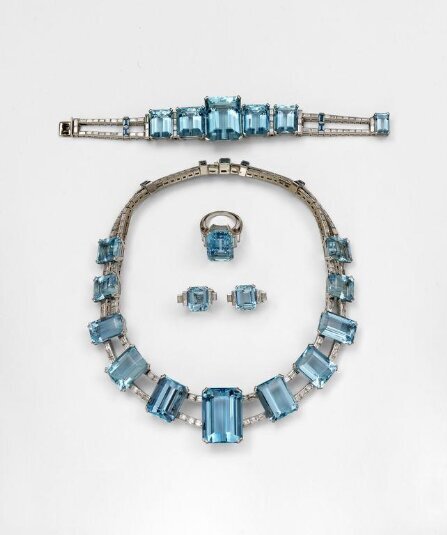
This suite on display in the V&A jewellery gallery is an exquisite example of perfectly matched gems, all trimmed and cut to form an exact graduation in size which would have taken years of diligent acquisition to accumulate. The principle items - necklace and bracelet - were created in the 1950’s by an unknown designer craftsman. Subsequently, the owner of these exceptional jewels, went to Chaumet to commission a matching ring and earrings in the early 1970 - a task that took them almost 2 years to fulfil whilst they scoured the world for gems to match.
The large crystals result in big gems costing relatively little compared to sapphires and emeralds. This cost benefit allows for the creation of spectacular jewels but matching large gems all the same exact colour, brilliance and hue to create an important piece such as a suite or tiara can be frustratingly difficult – as you might be able to imagine if you’ve ever had to match up colours for an interior or outfit.


